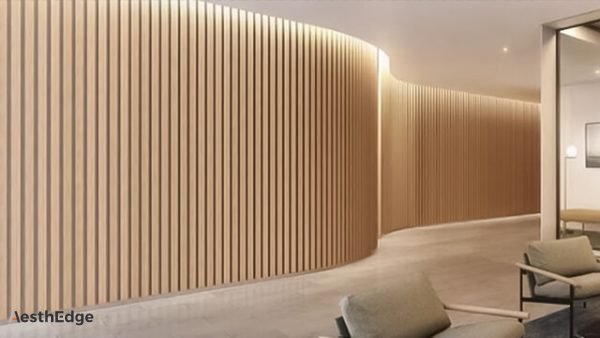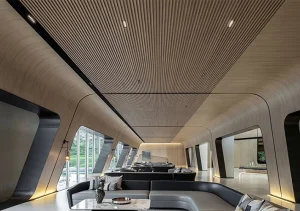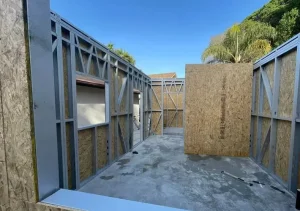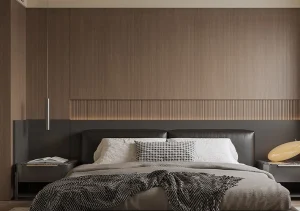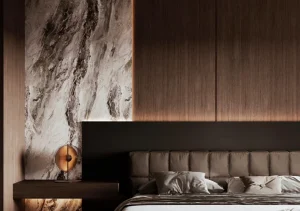Lighting plays a crucial role in defining the mood, functionality, and overall aesthetic of a hotel. From creating a warm welcome in the lobby to ensuring comfortable visibility in guest rooms, every lighting fixture serves a unique purpose. In the hospitality industry, lighting is not just a design element—it’s a strategic tool that influences guest experience, brand perception, and even energy efficiency.
This article will provide a comprehensive guide to the different types of hotel lighting, including their functions, characteristics, and applications in various hotel areas. Whether you are a hotel owner, designer, or contractor sourcing lighting solutions, understanding these categories will help you create more attractive and energy-efficient spaces.
Table of Contents
ToggleIntroduction: The Importance of Lighting in Hotels
Lighting in a hotel does far more than simply illuminate spaces. It defines ambiance, influences emotions, and enhances functionality. Proper lighting can make a room feel more spacious, a restaurant more inviting, and a lobby more luxurious. Poor lighting, on the other hand, can lead to discomfort, a negative impression, and even safety issues.
In the modern hospitality industry, lighting design integrates aesthetics, sustainability, and technology. Many hotels now use LED lighting, smart control systems, and energy-saving sensors to balance design quality with operational efficiency.
According to studies, over 70% of guests consider lighting quality an important factor in their overall satisfaction. Therefore, investing in the right type of hotel lighting is essential for creating memorable guest experiences.
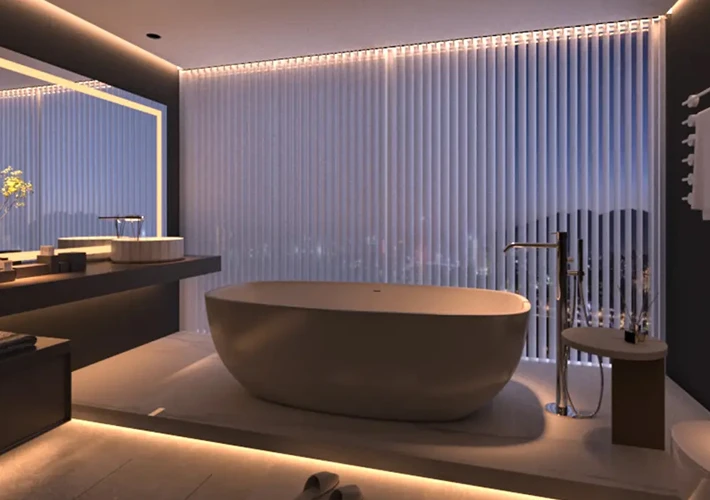
Key Functions of Hotel Lighting
Before exploring the types, it’s helpful to understand the key purposes of hotel lighting:
1.Aesthetic Enhancement
Lighting highlights architecture, interior design, textures, and materials. It creates visual harmony between furniture, walls, and artwork.
2.Functional Illumination
Every area—guest rooms, corridors, bathrooms, or restaurants—requires specific brightness and color temperature for functionality and comfort.
3.Emotional Atmosphere
Warm lighting tones evoke relaxation and luxury, while cool tones create a modern and energetic vibe. The lighting scheme helps convey the hotel’s identity.
4.Safety and Security
Adequate illumination in hallways, staircases, and outdoor spaces ensures guest safety and prevents accidents.
5.Energy Efficiency
Modern hotels focus on LED and smart systems to reduce operational costs and align with sustainability standards.
Major Types of Hotel Lighting
Hotel lighting can be broadly categorized into five main types. Each serves a unique role in achieving the desired ambiance and function.
3.1 Ambient Lighting
Definition:
Also known as general lighting, ambient lighting provides overall illumination that ensures visibility and comfort across spaces.
Purpose:
To create uniform light distribution that eliminates dark corners and establishes the base layer of a lighting design.
Examples of Fixtures:
- Ceiling-mounted downlights
- Chandeliers
- Recessed lights
- Wall sconces
- LED ceiling panels
Applications:
- Hotel lobbies
- Guest rooms
- Corridors and lounges
Design Tips:
Choose warm color temperatures (2700K–3000K) for a cozy feel and neutral white (3500K–4000K) for a contemporary ambiance.
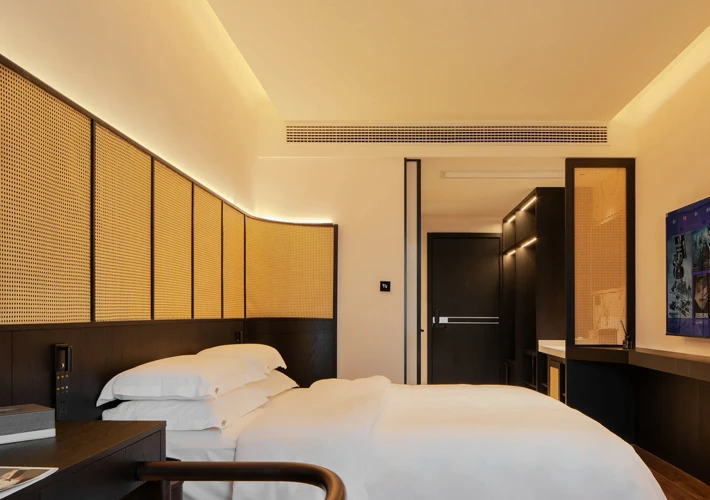
3.2 Task Lighting
Definition:
Task lighting is designed to support specific activities that require focused illumination.
Purpose:
To help guests read, work, groom, or cook comfortably without straining their eyes.
Examples of Fixtures:
- Bedside reading lamps
- Desk lamps
- Mirror lights
- Under-cabinet lights
Applications:
- Guest rooms (for reading and writing)
- Bathrooms (mirror lighting)
- Reception desks
Design Tips:
Use adjustable lights with dimming options to suit individual preferences and enhance usability.
3.3 Accent Lighting
Definition:
Accent lighting is used to draw attention to decorative elements, art pieces, or architectural features.
Purpose:
To create focal points and add depth to interior design.
Examples of Fixtures:
- Wall washers
- Spotlights
- Track lights
- LED strips
Applications:
- Artwork illumination
- Lobby sculptures
- Wall textures or columns
Design Tips:
Ensure contrast between accent lighting and ambient lighting for a striking visual effect.
3.4 Decorative Lighting
Definition:
Decorative lighting combines function and form—lighting fixtures that serve as design elements themselves.
Purpose:
To express style, theme, and brand identity through lighting design.
Examples of Fixtures:
- Chandeliers
- Pendant lamps
- Designer floor lamps
- Custom LED art installations
Applications:
- Lobbies and reception areas
- Hotel bars and restaurants
- Luxury suites
Design Tips:
Custom-made decorative lights enhance brand uniqueness and elevate the space’s perceived value.
3.5 Natural Lighting
Definition:
Natural light refers to the sunlight that enters through windows, skylights, or glass facades.
Purpose:
To create a healthy, inviting environment while reducing electricity usage during the day.
Applications:
- Lobby atriums
- Breakfast areas
- Conference halls
Design Tips:
Use large windows, sheer curtains, and reflective surfaces to maximize daylight penetration while maintaining privacy.
Hotel Lighting by Area
Each hotel zone demands specific lighting design based on functionality and atmosphere. Let’s explore the most common lighting strategies used in different hotel spaces.
4.1 Lobby Lighting
The hotel lobby is the first impression area—it sets the tone for the guest experience.
Recommended Lighting Mix:
- Ambient: Recessed LED ceiling lights for uniform brightness.
- Decorative: Statement chandeliers or pendant fixtures to enhance luxury.
- Accent: Spotlights to highlight artwork, plants, or brand logos.
Design Insight:
Use layered lighting to create a welcoming yet elegant environment. Warm tones (around 3000K) promote relaxation and hospitality.
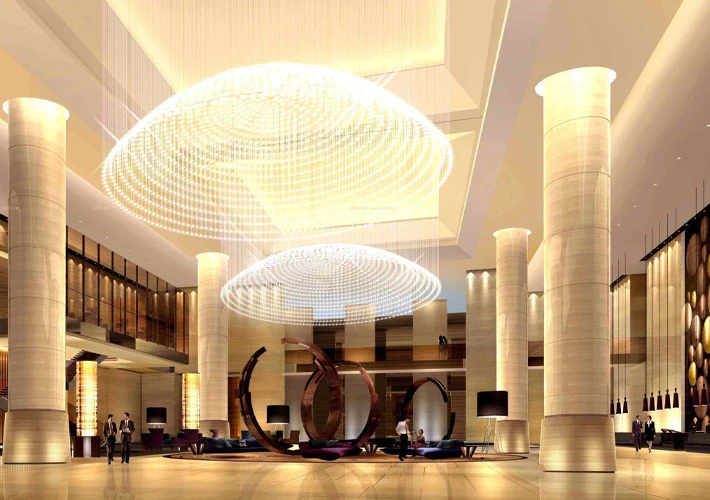
4.2 Guest Room Lighting
Guest rooms need flexible lighting that balances comfort and functionality.
Recommended Lighting Mix:
- Ambient: Ceiling-mounted or cove lights for general illumination.
- Task: Bedside lamps, desk lights, and bathroom mirrors.
- Accent: LED strips behind the headboard or under furniture for a cozy touch.
Design Insight:
Offer adjustable dimmers so guests can set their preferred brightness levels. Soft, warm tones improve sleep quality and comfort.
4.3 Restaurant and Bar Lighting
Lighting in dining areas influences appetite and mood.
Recommended Lighting Mix:
- Ambient: Overhead downlights for consistent brightness.
- Decorative: Hanging pendant lights or candle-style fixtures for intimacy.
- Accent: Spotlights to emphasize décor or wine displays.
Design Insight:
Warm color temperature (2700K–3000K) creates a relaxed and inviting atmosphere suitable for fine dining.
4.4 Corridor and Staircase Lighting
Corridors and stairways must ensure safety while maintaining aesthetic consistency.
Recommended Lighting Mix:
- Ambient: Wall sconces or recessed ceiling lights for even distribution.
- Accent: Floor-level LED strips to guide guests.
Design Insight:
Use motion sensors and low-wattage LEDs for energy efficiency during low-traffic hours.
4.5 Bathroom Lighting
Bathroom lighting must provide clarity for grooming while maintaining comfort.
Recommended Lighting Mix:
- Task: Mirror lights or vanity lamps.
- Ambient: Ceiling-mounted moisture-resistant fixtures.
Design Insight:
Neutral white lighting (3500K–4000K) ensures accurate skin tone reflection and enhances cleanliness.
4.6 Outdoor and Landscape Lighting
Exterior lighting plays a major role in security and brand presentation.
Recommended Lighting Mix:
- Pathway lights: For guest safety.
- Facade lights: To highlight architecture.
- Floodlights: For parking and signage.
Design Insight:
Use weatherproof LED fixtures and smart timers to balance visibility with energy conservation.
4.7 Conference and Banquet Hall Lighting
These multifunctional spaces require flexible lighting systems.
Recommended Lighting Mix:
- Ambient: Recessed LED ceiling lights for general illumination.
- Accent: Adjustable spotlights for podiums or stages.
- Decorative: Chandeliers for event elegance.
Design Insight:
Integrate smart controls that allow switching between business and event modes with varying brightness levels.
Energy Efficiency and Smart Lighting Systems
Modern hotels are embracing smart lighting and energy-efficient systems to cut operational costs and reduce carbon footprints.
Key Features:
- LED bulbs consume up to 80% less energy than traditional incandescent lamps.
- Motion sensors automatically adjust brightness based on occupancy.
- Centralized control systems allow hotel staff to manage lighting remotely.
Benefits:
- Lower electricity bills
- Extended fixture lifespan
- Enhanced sustainability credentials (LEED, BREEAM certifications)
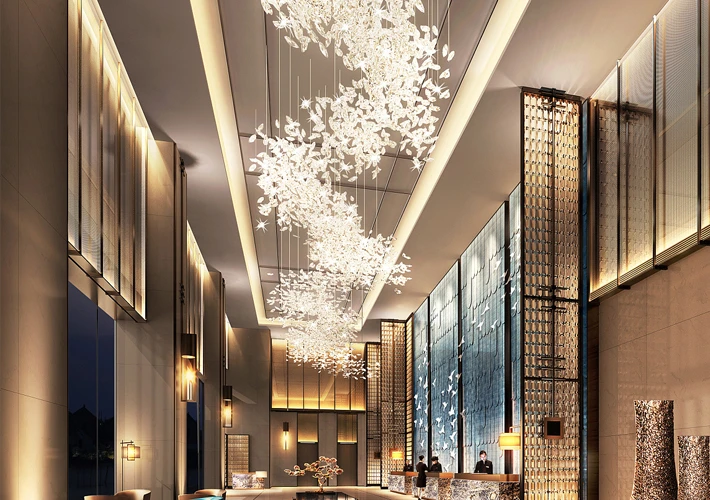
Current Trends in Hotel Lighting Design (2025 Outlook)
The global hotel lighting market is evolving rapidly, driven by technological innovation and aesthetic demands. Here are the latest trends shaping 2025:
Human-Centric Lighting (HCL):
Mimics natural daylight cycles to improve guest comfort and wellbeing.
Smart IoT Integration:
Voice-controlled and app-based lighting systems for luxury hotel experiences.
Sustainable Materials:
Eco-friendly fixture materials such as bamboo, recycled metal, or bioplastic.
Color-Changing LED Technology:
Adjustable RGB lighting to adapt ambiance for events or brand identity.
Minimalist Design:
Discreet recessed lighting replacing bulky fixtures for a clean modern aesthetic.
Customization & Branding:
Custom lighting fixtures reflecting the hotel’s unique brand story.
How to Choose the Right Hotel Lighting Supplier
Selecting a reliable lighting supplier or manufacturer is essential for project success. When sourcing from China or other global markets, consider the following factors:
- Product Quality: Ensure certifications like CE, RoHS, and UL.
- Customization Capability: Tailor designs to match your hotel theme.
- Energy Efficiency: Choose LED and smart-compatible systems.
- Warranty & After-Sales Support: Long-term reliability is critical.
- Factory Strength: Prefer suppliers with in-house design and testing teams.
If you are a hotel project contractor or furniture supplier, partnering with a professional lighting manufacturer can simplify project integration and ensure consistent quality across installations.
Conclusion
Hotel lighting is both an art and a science—it combines design aesthetics, guest psychology, and technical precision. From the welcoming glow of the lobby chandelier to the soothing bedside lamp in the guest room, every light contributes to the overall hospitality experience.
When planned strategically, lighting enhances comfort, safety, and brand identity while improving energy efficiency. Whether you are renovating an existing hotel or developing a new property, understanding the different types of hotel lighting is essential for achieving a perfect balance of beauty and performance.
If you are looking for high-quality hotel lighting solutions, consider collaborating with a professional Chinese lighting manufacturer specializing in LED, decorative, and architectural lighting systems for the hospitality industry. A reliable supplier can provide customized products, factory-direct pricing, and comprehensive support for global hotel projects.

